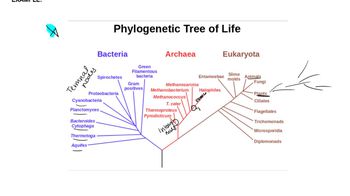Table of contents
- 1. Introduction to Genetics51m
- 2. Mendel's Laws of Inheritance3h 37m
- 3. Extensions to Mendelian Inheritance2h 41m
- 4. Genetic Mapping and Linkage2h 28m
- 5. Genetics of Bacteria and Viruses1h 21m
- 6. Chromosomal Variation1h 48m
- 7. DNA and Chromosome Structure56m
- 8. DNA Replication1h 10m
- 9. Mitosis and Meiosis1h 34m
- 10. Transcription1h 0m
- 11. Translation58m
- 12. Gene Regulation in Prokaryotes1h 19m
- 13. Gene Regulation in Eukaryotes44m
- 14. Genetic Control of Development44m
- 15. Genomes and Genomics1h 50m
- 16. Transposable Elements47m
- 17. Mutation, Repair, and Recombination1h 6m
- 18. Molecular Genetic Tools19m
- 19. Cancer Genetics29m
- 20. Quantitative Genetics1h 26m
- 21. Population Genetics50m
- 22. Evolutionary Genetics29m
22. Evolutionary Genetics
Phylogenetic Trees
Problem 5
Textbook Question
Textbook QuestionHow do copy-number variants arise? Do they account for more polymorphism than SNPs within the human population?
 Verified Solution
Verified SolutionThis video solution was recommended by our tutors as helpful for the problem above
Video duration:
2mPlay a video:
Was this helpful?
Key Concepts
Here are the essential concepts you must grasp in order to answer the question correctly.
Copy-Number Variants (CNVs)
Copy-number variants are segments of DNA that vary in the number of copies among individuals in a population. These variations can result from duplications or deletions of genomic regions and can influence gene dosage, potentially affecting phenotypic traits and susceptibility to diseases.
Recommended video:
Guided course

Aberrant Euploid
Single Nucleotide Polymorphisms (SNPs)
Single nucleotide polymorphisms are the most common type of genetic variation among individuals, involving a change in a single nucleotide at a specific position in the genome. SNPs can affect gene function and contribute to individual differences in traits, but they typically represent smaller variations compared to CNVs.
Recommended video:
Guided course

Recombination after Single Strand Breaks
Genetic Polymorphism
Genetic polymorphism refers to the occurrence of two or more genetically distinct forms within a population. Both CNVs and SNPs contribute to genetic diversity, but studies suggest that CNVs may account for a greater proportion of this diversity due to their larger size and potential impact on gene expression and function.
Recommended video:
Guided course

Modern Genetics

 8:16m
8:16mWatch next
Master Phylogenetic Trees with a bite sized video explanation from Kylia Goodner
Start learningRelated Videos
Related Practice


